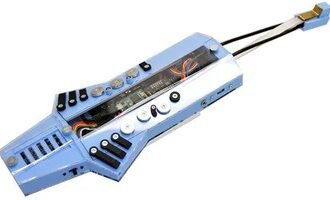Introduction
A well-manicured lawn instantly boosts your home’s curb appeal, and the secret lies in choosing the right lawn mower. With countless options available, selecting the perfect mower can feel overwhelming. Whether you’re maintaining a postage-stamp yard or several acres, this comprehensive guide walks you through every consideration – from basic mechanics to advanced robotic models.
We’ll explore all lawn mower types, key features, maintenance musts, and crucial safety tips. By the end, you’ll confidently select equipment that keeps your grass healthy while making yard work easier. Let’s dive in!
Lawn Mower: Understanding the Basics
Before comparing models, it’s essential to grasp what lawn mowers do and why your choice impacts results.
How Does a Lawn Mower Work?
All mowers operate on the same fundamental principle: a rapidly spinning blade (or blades) cuts grass to an even height. The differences lie in:
- Power source (gas, electricity, or manual)
- Cutting mechanism (rotary blades vs. reel scissor-action)
- Grass disposal (bagging, mulching, or side discharge)
For example, a gas-powered rotary mower uses a single horizontal blade that spins at 3,000+ RPM, while a reel mower’s vertical blades snip grass like scissors for a cleaner cut.
Why Choosing the Right Lawn Mower Matters
Selecting the wrong mower leads to:
- Patchy results (uneven cuts stress grass)
- Unnecessary labor (pushing a heavy mower uphill)
- Higher costs (frequent repairs/replacements)
- Environmental impact (excessive emissions or noise)
I learned this the hard way when I used a small electric mower on my new half-acre property – it died mid-job! Matching equipment to your specific needs saves time, money, and frustration.
Types of Lawn Mowers: Which One Suits Your Needs?
Gas-Powered Lawn Mowers
The workhorses of lawn care, gas mowers deliver:
✅ Power: Handle thick grass and large areas (0.5+ acres)
✅ Mobility: No cords or battery limits
❌ Maintenance: Regular oil changes, spark plug replacements
❌ Noise/Emissions: Louder and less eco-friendly
Pro Tip: Look for OHV (overhead valve) engines – they’re more efficient and durable.
Electric Lawn Mowers (Corded & Cordless)
Corded Models:
- Lightweight (under 30 lbs)
- Unlimited runtime (but limited by cord length)
- Best for small, flat yards under 1/4 acre
Cordless (Battery) Models:
- More freedom (no cords)
- Typically 30-60 minutes per charge
- Newer 80V models rival gas mower power
Robotic Lawn Mowers
The ultimate “set it and forget it” solution:
- Automatically mow on schedule
- Quiet and eco-friendly
- Require perimeter wiring
- Best for small/medium lawns (up to 1 acre)
Real-World Insight: My neighbor’s robotic mower runs daily, keeping his lawn golf-course perfect with zero effort!
Manual Reel Mowers
The eco-conscious choice:
- Silent operation
- Zero emissions
- Provides cleanest cut (scissor action)
- Requires more physical effort
Riding Lawn Mowers & Lawn Tractors
For estates and large properties:
- Riding Mowers: Cut 1-3 acres efficiently
- Lawn Tractors: Add towing/hauling capabilities
- Zero-Turn Models: Offer superior maneuverability
Key Features to Look for in a Lawn Mower
Cutting Width & Height Adjustment
- Width: Ranges from 14″ (reel) to 54″ (riding)
Example: A 21″ deck covers ~25% more area per pass than an 18″ model - Height Adjustment:
- Look for single-lever control
- Range should include 1″-4″ for most grasses
Mulching, Bagging, & Side Discharge
- Mulching:
- Returns nutrients to soil
- Best for frequent mowing
- Bagging:
- Cleanest look
- Ideal when grass is overgrown
- Side Discharge:
- Quickest method
- May leave clumps
Engine Power & Battery Life
| Type | Power Metric | Good Range |
|---|---|---|
| Gas | CC (cubic centimeters) | 140cc+ for 1/2 acre |
| Electric | Voltage | 40V-80V battery systems |
Self-Propelled vs. Push Mowers
- Self-Propelled:
- Front-wheel drive: Better for flat areas
- Rear-wheel drive: Superior on hills
- Push Mowers:
- 30% cheaper
- Good exercise (but tiring on large lawns)
How to Maintain Your Lawn Mower for Longevity
Follow this seasonal maintenance checklist:
Spring Startup:
✔ Change oil (gas models)
✔ Sharpen/replace blades
✔ Check tire pressure
After Each Use:
✔ Clean undercarriage
✔ Wipe down surfaces
Winter Storage:
✔ Drain fuel or add stabilizer
✔ Remove battery (electric)
✔ Store in dry place
Blade Care Tip: A sharp blade cuts cleanly, while a dull one tears grass – leading to brown tips and disease. Sharpen every 20-25 hours of use!
Lawn Mower Safety Tips You Should Never Ignore
- Protective Gear:
- Steel-toe shoes
- Safety glasses
- Hearing protection (for gas models)
- Operation Rules:
- Never remove safety guards
- Clear yard of debris first
- Mow across slopes (not up/down)
- Child Safety:
- Keep kids/pets indoors
- Never allow riders (even on riding mowers)
Shocking Stat: Over 80,000 mower-related injuries occur annually in the US alone (CPSC data). Following safety guidelines prevents most accidents.
Frequently Asked Questions
What’s the average lifespan of a lawn mower?
With proper care:
- Gas: 8-10 years
- Electric: 7-9 years
- Robotic: 5-7 years
Can I use a lawn mower on wet grass?
Avoid it! Wet grass:
- Clogs mower decks
- Causes uneven cuts
- Increases slipping risks
How often should I change the oil in my gas mower?
Every 50 hours of use or annually – whichever comes first.
Are expensive lawn mowers worth it?
For large or challenging yards, yes. Premium features like:
- Heavy-duty decks
- Commercial-grade engines
- Better warranties
…justify higher costs for serious users.
What height should I cut my grass?
Most grasses thrive at 2.5″-3.5″. Never remove more than 1/3 of blade length at once.
Do robotic mowers work on bumpy lawns?
Most handle mild unevenness, but extremely rough terrain may require leveling first.
Conclusion
Choosing the perfect lawn mower involves balancing power, convenience, and your yard’s specific needs. Whether you opt for a rugged gas model, eco-friendly electric, or futuristic robotic helper, proper selection and maintenance ensure years of reliable service.
Remember:
- Match mower type to your lawn size
- Prioritize safety every time you mow
- Regular maintenance saves money long-term
Armed with this knowledge, you’re ready to invest in equipment that keeps your outdoor space looking its absolute best. Happy mowing!









